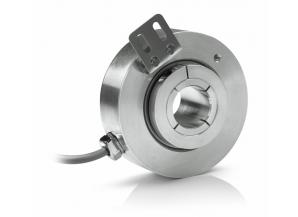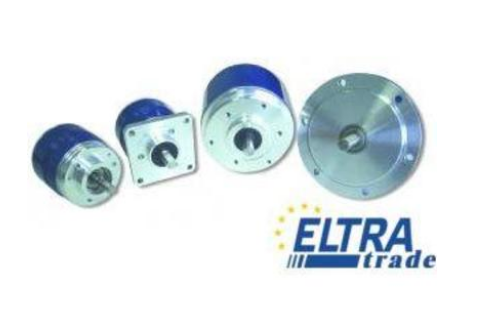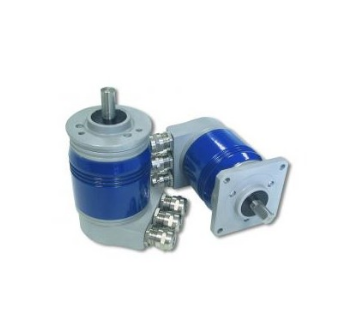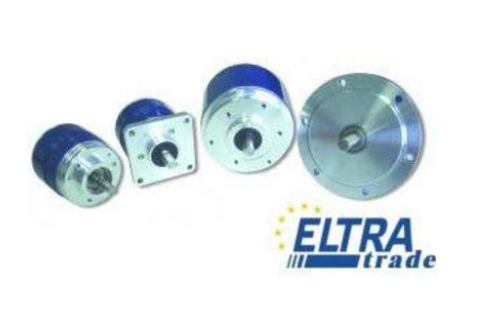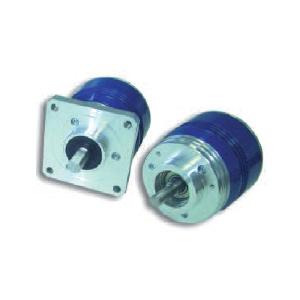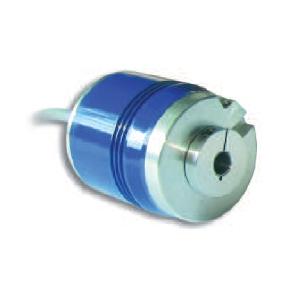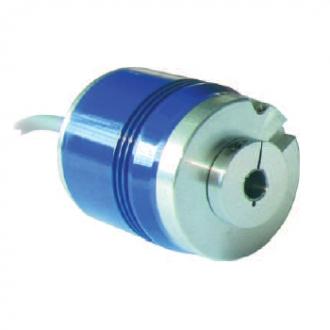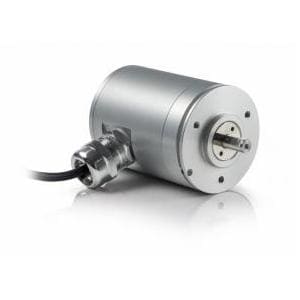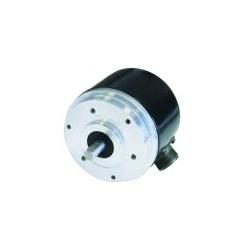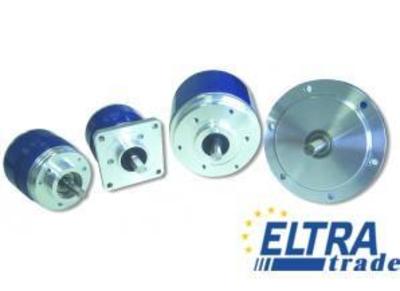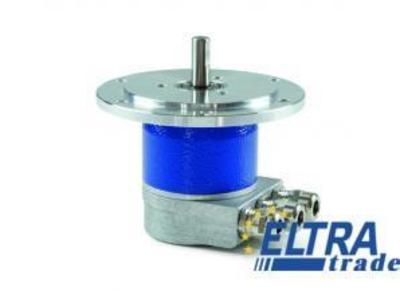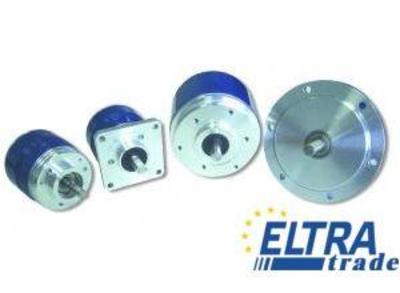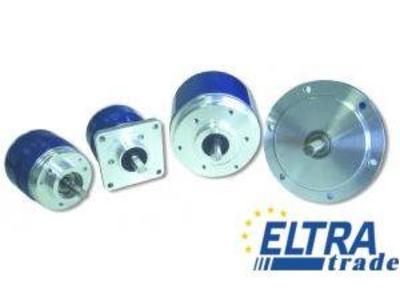Eltra Encoder Optical singleturn encoder
Solid shaft singleturn absolute encoder with synchronous flange (diam. 50 mm).
Singleturn Absolute Optical Encoder
Solid shaft singleturn absolute encoder with clamping flange (diam. 36 mm).
Gray code encoder
Solid shaft singleturn absolute encoder with centering square flange (diam. 31,75 mm).
Optical rotary encoder
Solid shaft singleturn absolute encoder with centering square flange (diam. 50 mm).
Binary code encoder
Optical Shaft Encoder
Optical Shaft Encoder
Solid shaft single turn absolute encoder with centering square flange.
Solid shaft singleturn absolute encoder.
Solid shaft singleturn absolute encoder Eltra.
Optical Singleturn Encoders
The optical encoder technology unites devices that convert mechanical motion into electrical signals. They typically consist of a light source, a disk with optical patterns, and a sensor. As the disk rotates, the sensor detects changes in the light patterns, generating electrical signals that can be used to determine the rotation's position, speed, or direction. Let’s find out more about absolute singleturn optical encoders.
Types of Optical Singleturn Encoders
Absolute single turn optical encoders come in various types, each suited to different applications and operating environments. Here are some of them.
Incremental optical encoders
These encoders generate a series of pulses as the shaft rotates. Each pulse represents a specific movement increment, typically called counts per revolution (CPR). They do not provide absolute position information but rather measure changes in position relative to a reference point.
Linear optical encoders
While most encoders are rotary, linear optical encoders measure linear motion. They use the same principles as rotary encoders but are designed to track linear displacement along a linear scale.
Modular optical encoders
These encoders are designed with modular components, offering resolution, output type, and signal processing flexibility. They can be customized for specific applications and integrated into various systems easily.
Miniature optical encoders
These are compact-sized encoders designed for applications with space constraints or where weight is a concern. They offer high resolution and accuracy despite their small size.
Heavy-duty optical encoders
Designed to withstand harsh environments, heavy-duty encoders are ruggedized to resist dust, moisture, shock, and vibration. They are commonly used in industrial applications such as manufacturing and automation.
Hollow shaft optical encoders
These encoders feature a hollow shaft design, allowing them to be directly mounted onto a motor shaft without additional coupling components. They are commonly used in motor control applications.
Applications of Optical Singleturn Encoders
Optical singleturn encoders find applications in various industries and fields where precise position feedback is essential. Some typical singleturn encoder applications include.
Industrial automation
Absolute singleturn optical encoder can be used in industrial automation systems to provide feedback on the position, speed, and direction of moving components such as conveyor belts, robotic arms, and CNC machines.
Motion control
They are used in motion control systems to precisely position components in applications like semiconductor manufacturing, 3D printing, packaging machinery, and textile machinery.
Robotics
Encoders are essential in robotics for determining the position and orientation of robotic joints, enabling accurate control of robotic arms, grippers, and end effectors in tasks ranging from assembly to material handling.
Machine tools
Optical encoders are commonly integrated into machine tools such as lathes, milling machines, and grinders to provide feedback for position control, tool positioning, and spindle speed control, ensuring accuracy in machining operations.
Medical devices
They are used in various medical devices and equipment, including diagnostic instruments, imaging systems, surgical robots, and patient positioning systems, to control movements and positions during medical procedures precisely.
Aviation and aerospace
Optical sensor innovations are utilized in aviation and aerospace applications to control flight surfaces, position satellite antennas, actuate valves and actuators, and maintain alignment in space telescopes and satellite systems.
Renewable energy
In wind turbines and solar tracking systems, optical encoders are employed to monitor the orientation of blades or solar panels, adjusting their positions to maximize energy capture efficiency.
Automotive
They are used in automotive applications such as electric power steering systems, throttle position sensing, transmission control, and chassis stabilization systems to provide accurate feedback for control algorithms.
Textile industry
These devices are used in textile machinery to control yarn tension, regulate fabric speed, and ensure precise positioning in weaving, spinning, and knitting processes.
Navigation systems
Encoders play a role in navigation systems for determining the position and heading of vehicles, ships, and uncrewed aerial vehicles (UAVs) in applications like GPS-based navigation, autopilot systems, and marine vessel positioning.
Installation and Maintenance of Optical Singleturn Encoders
Installing and maintaining each single-turn encoder properly ensures its accurate operation and longevity. Here are some general guidelines for installation and maintenance.
- Securely mount the encoder to the shaft or surface using appropriate mounting hardware. Ensure the encoder is appropriately aligned with the equipment it monitors or controls.
- If the encoder is mounted on a rotating shaft, use a flexible shaft coupling to accommodate any misalignment between the encoder and the shaft. This helps prevent undue stress on the encoder bearings and shaft.
- Install the encoder in a clean and dry environment whenever possible. If the application involves exposure to dust, moisture, or extreme temperatures, consider using protective enclosures or seals to shield the encoder from environmental hazards.
- Route the encoder cables away from electrical noise, moving parts, and heat sources to prevent interference and potential damage to the wires.
- Ensure the encoder disk or scale is adequately aligned with the optical sensor to guarantee accurate readings. Follow the manufacturer's instructions for aligning and calibrating the encoder during installation.
- Periodically inspect the encoder for signs of damage, wear, or contamination. Check for loose mounting hardware, damaged cables, or other issues affecting the encoder's performance.
- Keep the encoder and its surroundings clean to prevent dust, dirt, or debris accumulation, which can impair the encoder's optical components and affect its accuracy. Use a soft, dry cloth or compressed air to clean the encoder surfaces and optics gently.
- If the encoder has moving parts, such as bearings or gears, follow the manufacturer's recommendations for lubrication. Over-lubrication can attract dirt and debris, while under-lubrication can lead to premature wear and failure.
- Periodically calibrate the encoder to ensure accurate readings. This may involve adjusting the alignment, resolution settings, or zero position. Follow the manufacturer's guidelines for calibration procedures and intervals.
Considerations When Choosing Optical Singleturn Encoders
Choosing the suitable optical singleturn encoder for your application involves considering several key factors to ensure compatibility, performance, and reliability.
- Determine the required resolution for your application. Resolution is the slightest angular or linear movement that the encoder can detect. Higher resolution provides more precise position feedback.
- Consider the accuracy requirements of your application. Different applications may have varying precision needs, and not all encoders offer the same degree of accuracy.
- Check the maximum speed at which the encoder can reliably operate. Some applications, such as high-speed machinery or robotics, may require encoders that can keep up with rapid movements.
- Ensure that the encoder's mounting configuration is compatible with your equipment. Consider factors such as shaft size, mounting method, and available space for installation.
- Determine the electrical interface required for your control system. Standard interface options include parallel, serial, or fieldbus interfaces. Ensure the encoder's output signals are compatible with your controller or PLC.
- Consider the encoder's physical size and form factor, especially if space is limited. Some applications may require compact or low-profile encoders.
- Consider your budget constraints. While meeting technical specifications is important, balancing performance with cost-effectiveness is essential.
